TwoStep: A new way to move
This passion project was inspired by seeing headlines about the growing elderly population in the US, and how they want to “age in place,” i.e. in their own homes. To figure out issues they face at home, I interviewed Occupational Therapists, who highlighted mobility as a key concern, especially walkers. As one therapist noted, “if you can’t move, you really can’t be independent at home.”
To figure out problems with walkers, I talked to walker users, their family members, and Physical Therapists. Here’s what I heard…
One story, two sides
Surprisingly, most seniors said they loved their walker; it was essential to their daily life. But I heard a different story from family members and therapists: in their opinion, the walker was actually the problem.
Primary User: Injury Recovery
Mobility is increasing
“I love my walker!”
Secondary User: Chronic Condition
Mobility is declining
“I couldn’t live without it!”
Family Member
His grandpa uses a walker for a chronic condition.
“My family thinks the walker actually made it worse.”
Physical Therapist
20+ years working with seniors
“Most of my patients struggle to graduate from a walker.”
how can we help users cross the mobility gap?
I identified a gap in the injury recovery process: eventually, seniors get too much support from a walker, but they aren’t ready yet for a cane. To help users cross this gap, I needed to design something that gave less support than a walker, but more support than a cane.

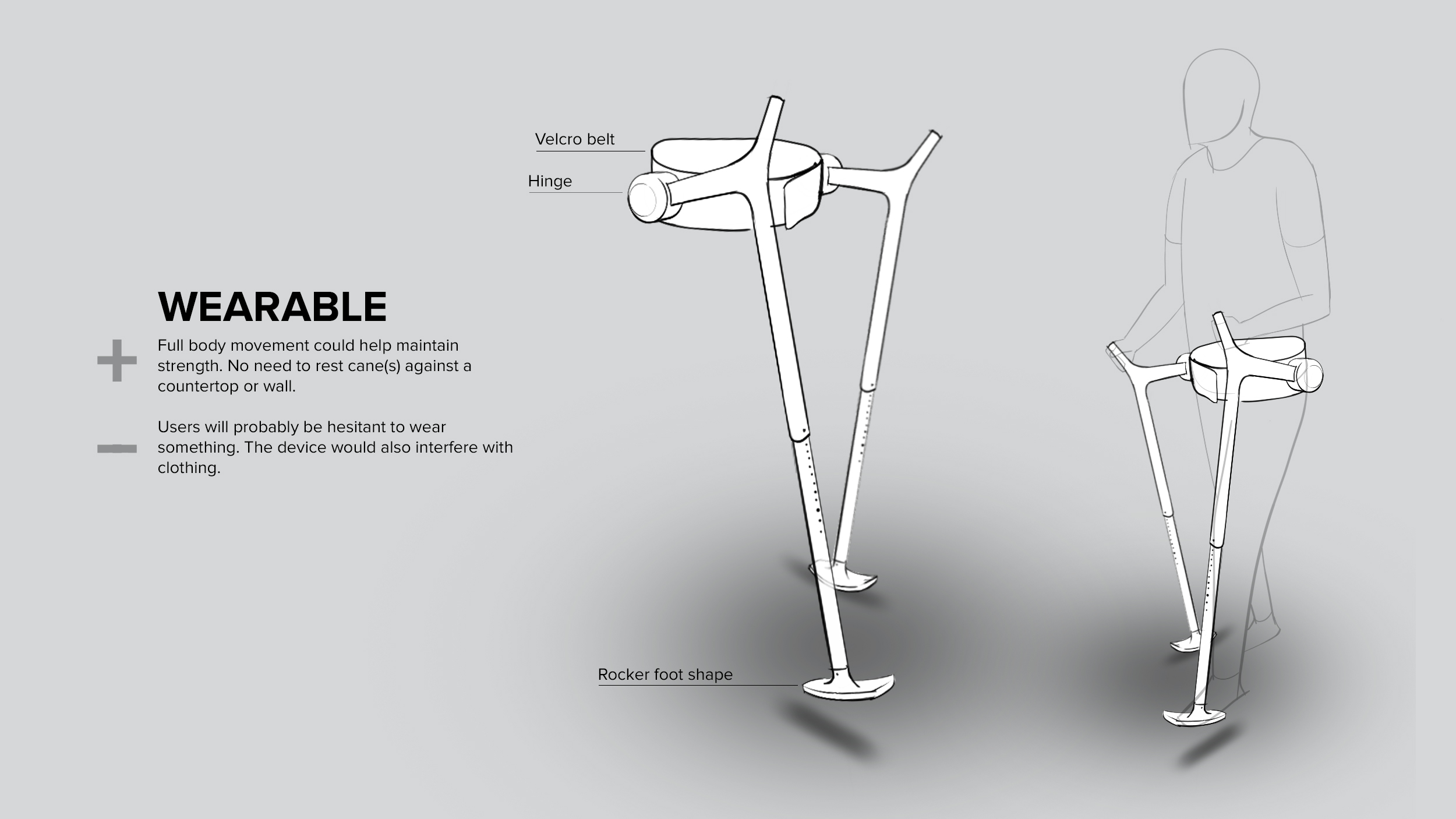
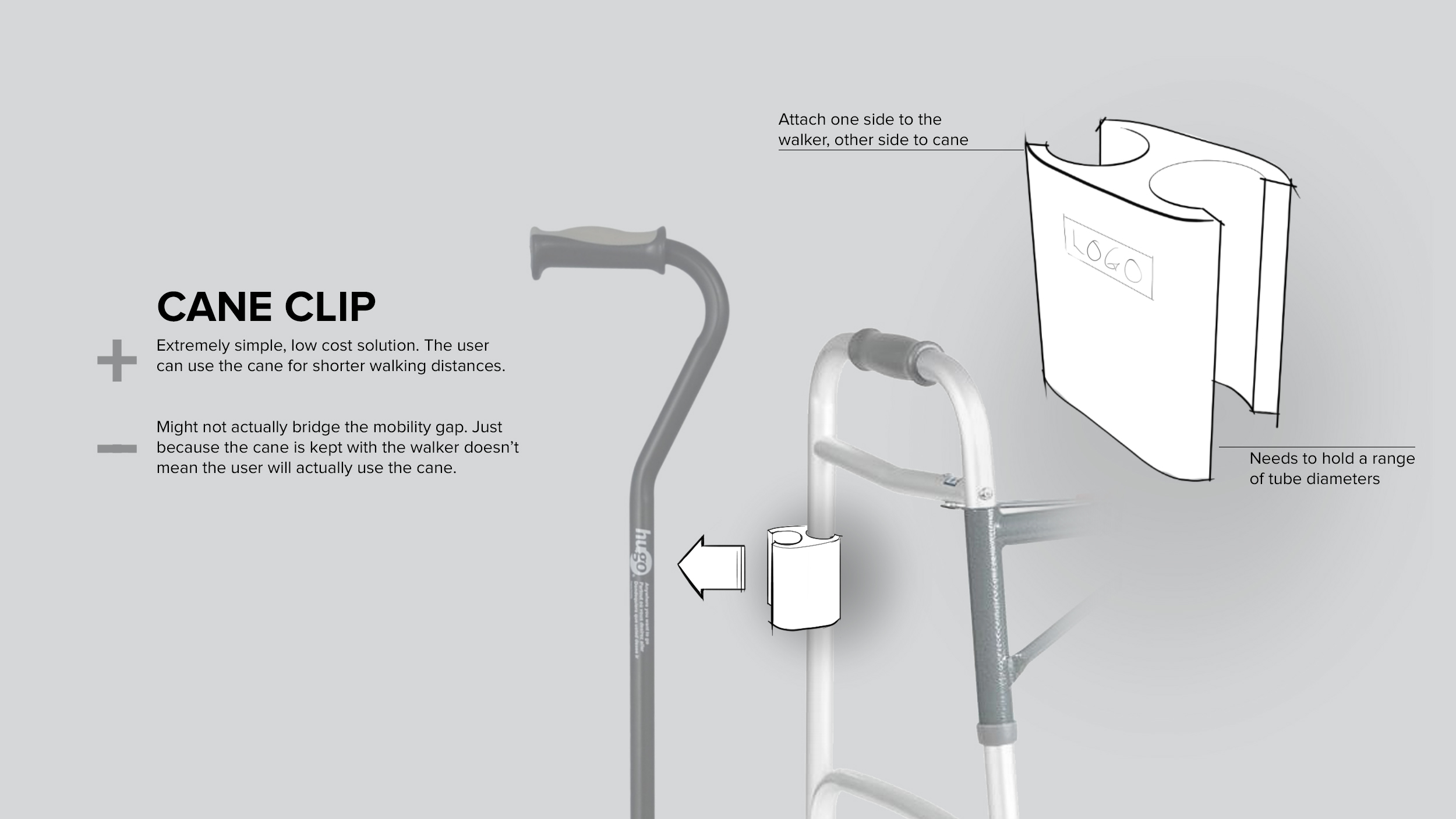
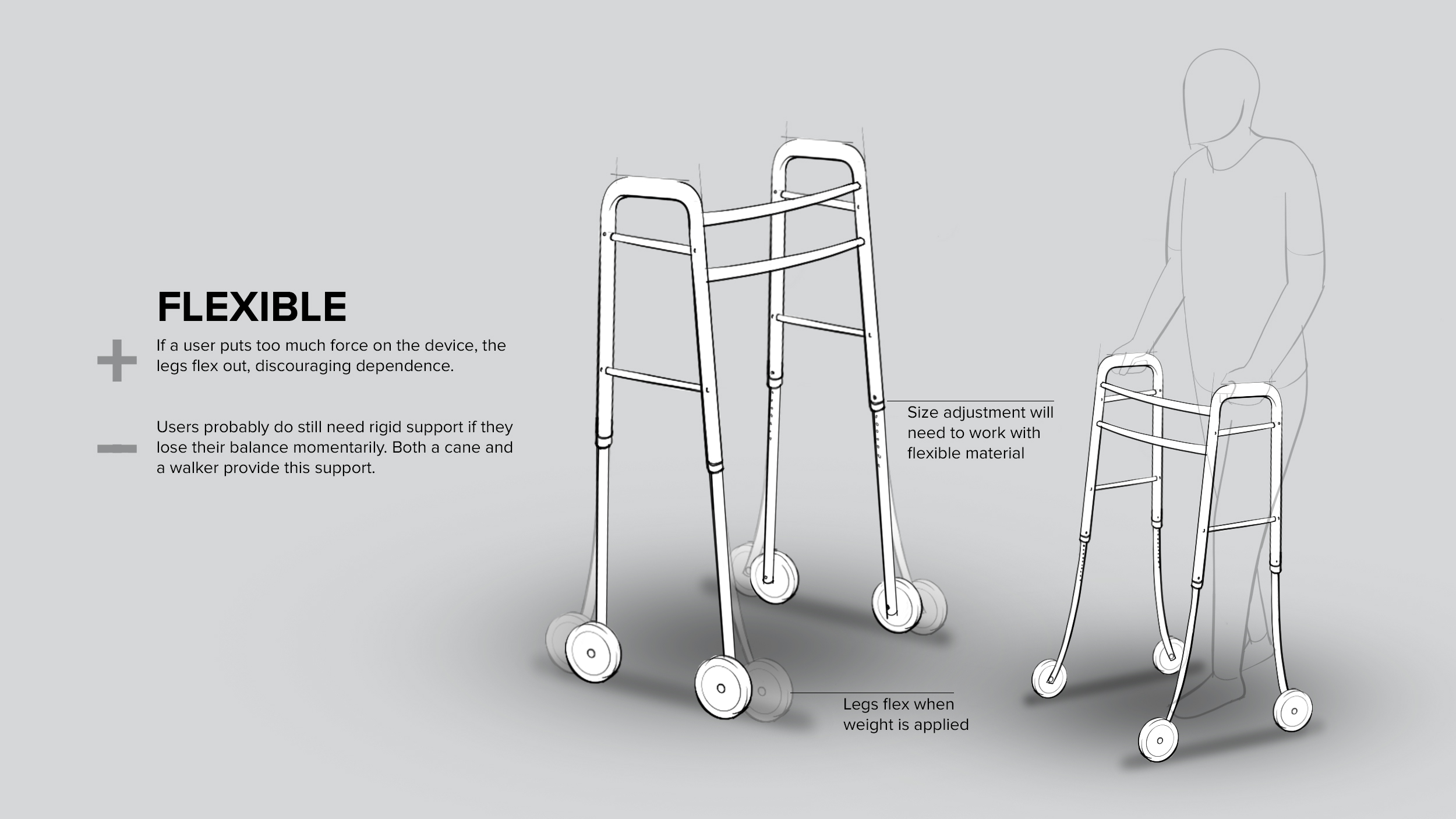
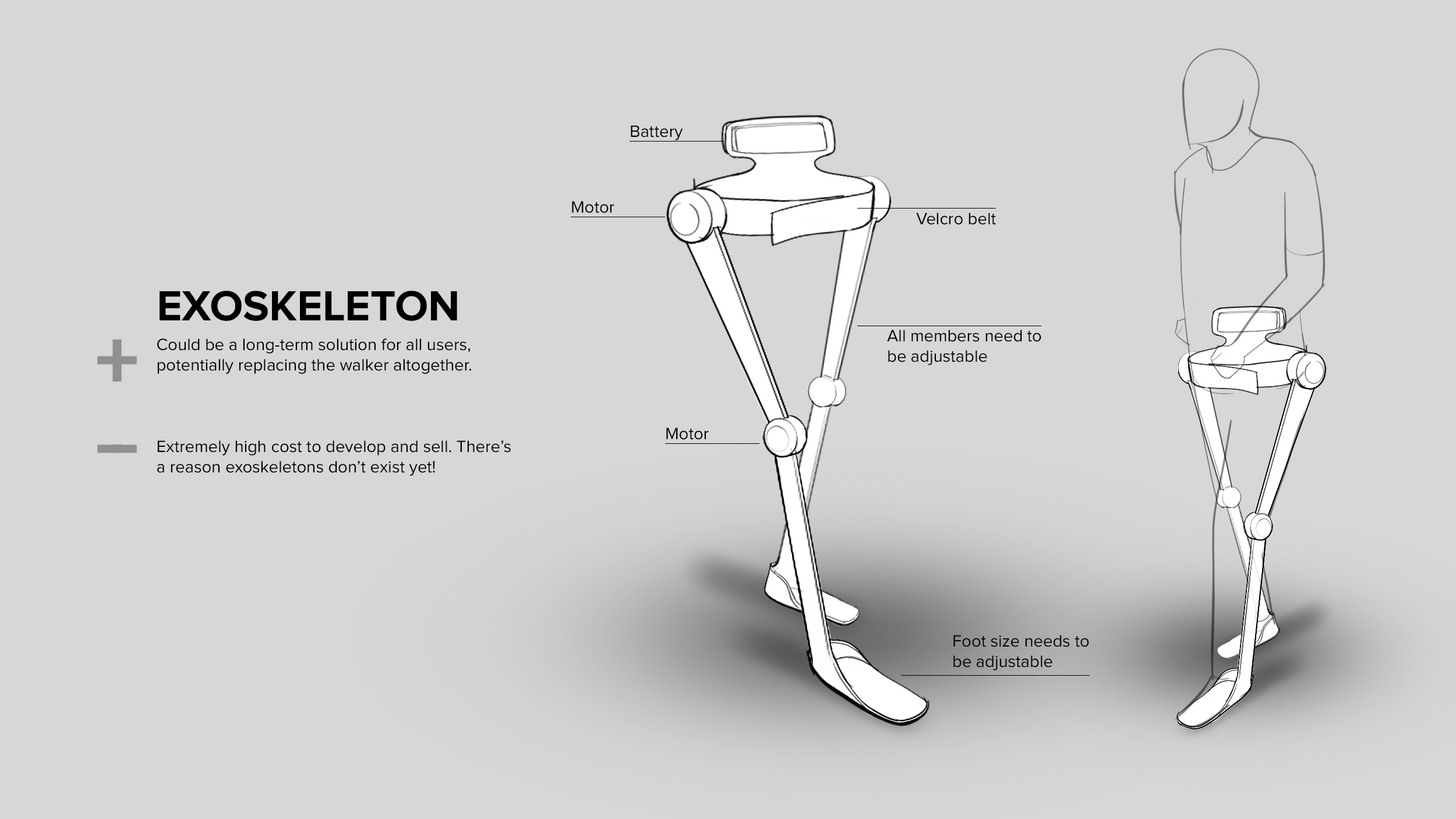
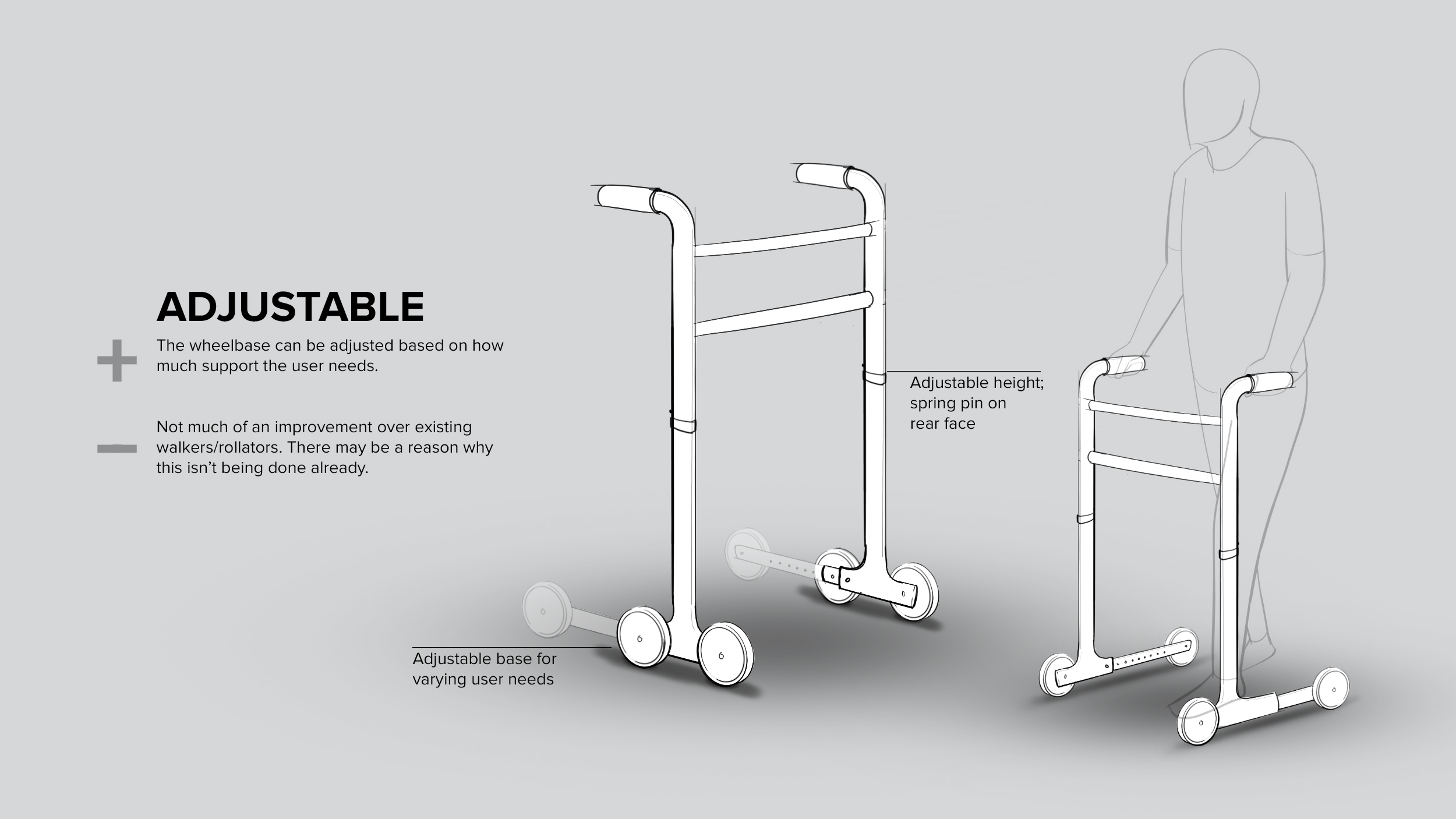
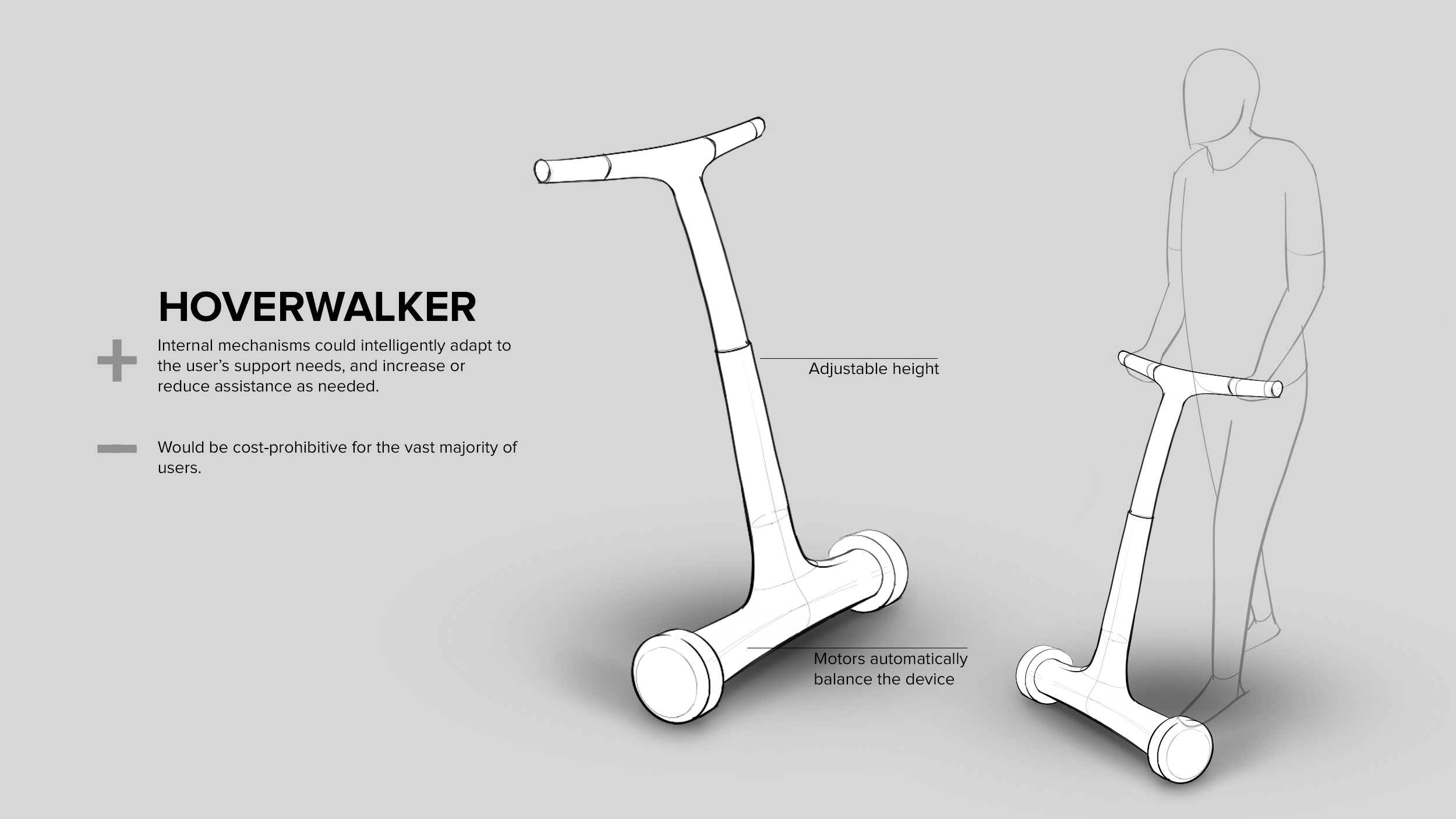
iterative Prototyping
The “Hinge” idea was selected by a physical therapist with over 20 years of experience working with seniors. She liked the idea of a walker that “moves with you,” and thought it would be a good next step for her walker patients.
“I would prescribe this for any walker patient.”
—Mary Pat, Geriatric Physical Therapist for 20+ years














